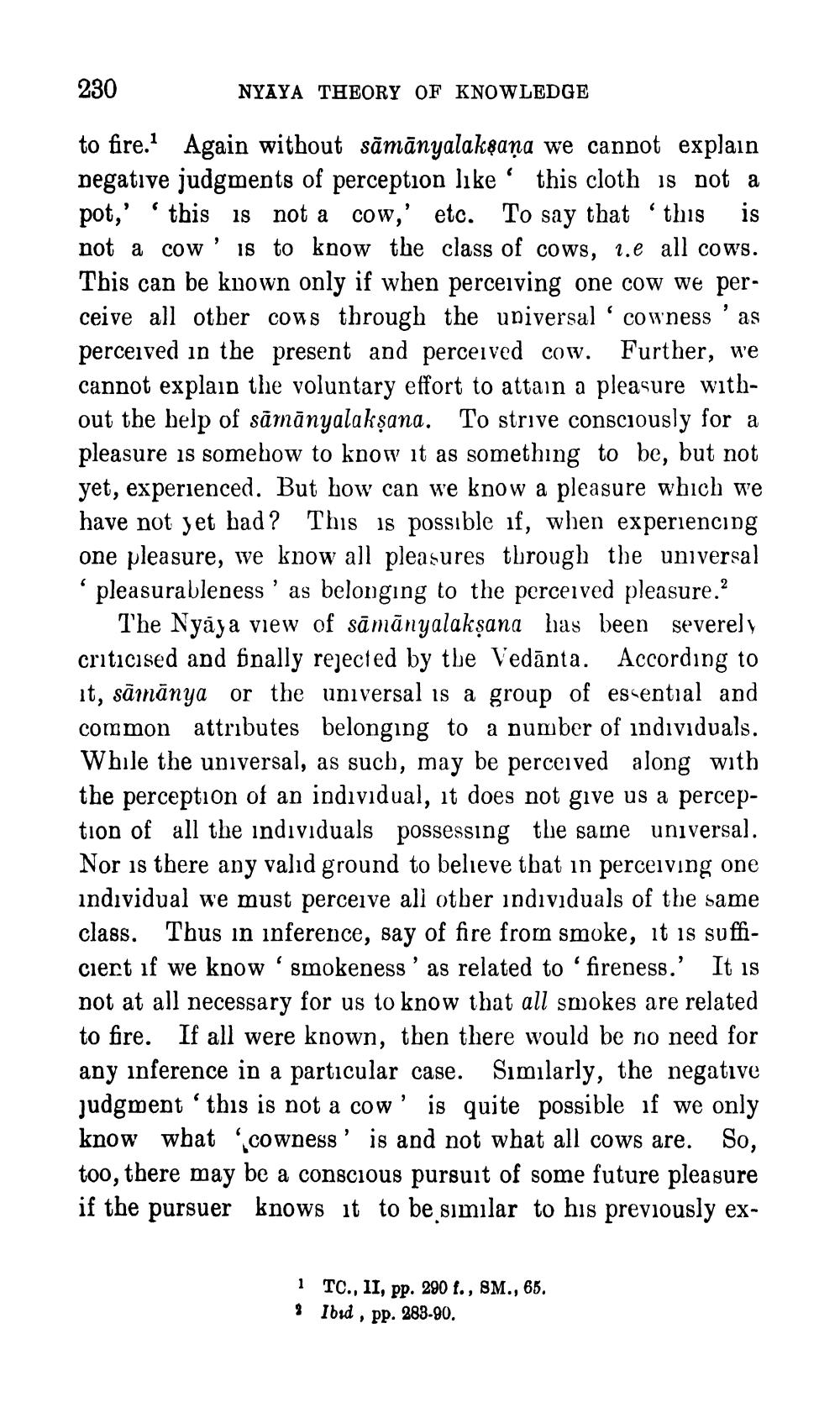________________
230
is
،
to fire. Again without sāmānyalakṣaṇa we cannot explain negative judgments of perception like this cloth is not a pot,' 'this is not a cow,' etc. To say that this not a cow is to know the class of cows, 1.e all cows. This can be known only if when perceiving one cow we perceive all other cows through the universal cowness' as perceived in the present and perceived cow. Further, we cannot explain the voluntary effort to attain a pleasure without the help of sāmānyalakṣana. To strive consciously for a pleasure is somehow to know it as something to be, but not yet, experienced. But how can we know a pleasure which we have not yet had? This is possible if, when experiencing one pleasure, we know all pleasures through the universal pleasurableness' as belonging to the perceived pleasure.2
6
The Nyaya view of sāmānyalakṣana has been severely criticised and finally rejected by the Vedanta. According to it, samanya or the universal is a group of essential and common attributes belonging to a number of individuals. While the universal, as such, may be perceived along with the perception of an individual, it does not give us a perception of all the individuals possessing the same universal. Nor is there any valid ground to believe that in perceiving one individual we must perceive all other individuals of the same class. Thus in inference, say of fire from smoke, it is sufficiert if we know smokeness' as related to 'fireness.' It is not at all necessary for us to know that all smokes are related to fire. If all were known, then there would be no need for any inference in a particular case. Similarly, the negative judgment this is not a cow is quite possible if we only know what cowness' is and not what all cows are. So, too, there may be a conscious pursuit of some future pleasure if the pursuer knows it to be similar to his previously ex
6
"
"
NYAYA THEORY OF KNOWLEDGE
"
1 TC., II, pp. 290 f., SM., 65. Ibid, pp. 283-90.




